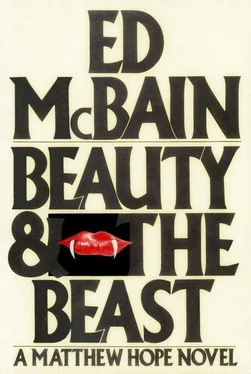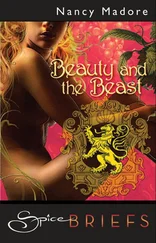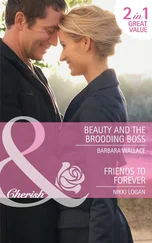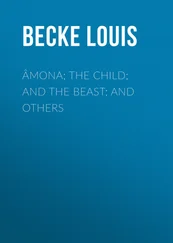“I think you were about to say the name ‘Michelle.’ ”
“I don’t know anyone named Michelle.”
“But that’s what you were about to say, isn’t it? You were about to say, ‘What’s any of this got to do with Michelle?’”
“Well, really, I can’t imagine how you can possibly know what I was about to say. Are you a mind reader, Mr. Hope?”
“ Did you know Michelle Harper?”
“No.”
“You’re sure about that?”
“Positive.”
“Do you know George Harper?”
“No.”
“Let’s get back to Andrew Owen for a minute.”
“No, let’s not get back to anyone. Let’s find the door and get out of here, okay, Mr. Hope?”
“Miss Reynolds—”
“Before I call the police,” she said.
“Sure,” I said, and left.
I had the sudden feeling that everyone in the entire world — including my own client — was lying.
And I wondered why.
In the year 1621, Governor William Bradford of Massachusetts decreed that December 13 be set aside as a day of feasting and prayer to express the gratitude of the colonists for the bounty of the first corn harvest they’d had since landing at Plymouth Rock. The Indians invited to the feast brought gifts of venison and wild turkey, which the women served together with the fish, geese, and ducks the men of the colony had provided. There was cornmeal bread in abundance, of course, and journeycake and succotash and nuts and pumpkin stewed in maple sap. The colonists and their Indian guests spent three days in prayer, singing, and feasting. That was America’s first Thanksgiving.
In this part of Florida, the Calusa and Timucua tribes of Indians weren’t faring quite as well as their neighbors far to the north. The first white man they had ever seen was the Spanish conquistador Juan Ponce de León, who came to the Gulf Coast in 1513, fresh from his exploration on the Atlantic side, where he had given Florida its name and claimed for Spain all the land upon which he’d set foot. Here on the western side, he met with fierce resistance from the Indians, and was forced to sail back to Puerto Rico without the gold he was seeking. He did not keep his promise to return until eight years later, in 1521, only to be welcomed by a poisoned Indian arrow that ended his life and his dreams of glittering riches and eternal youth. (If he’d still been alive today, he’d probably have joined my three investor-clients in their intended conquistadorial plundering of the natural riches of Sabal Key.)
But de León wasn’t to be the last of the Spaniards who came to Florida’s shores. In 1539, his countryman Hernando de Soto landed on what is now known as Stone Crab Key, looking for the same gold that had eluded his predecessor, a treasure the Indians seemed not to know existed. The fighting was fierce and bloody, causing a Spanish defeat so monumental that Spain thereafter called off any future gold-seeking Gulf Coast expeditions. Other white men, however, could not be dissuaded from coming to Florida again and again, bringing with them a delightful array of civilized treasures like smallpox and syphilis (the Spanish disease, the French disease, the English disease, depending on where you came from) and taking back with them a commodity more valuable than the elusive gold they constantly sought — the able young bodies of Calusan and Timucuan braves.
By 1621, when those Massachusetts white men and Indians were celebrating together at their outdoor tables laden with food and drink, the Calusans and Timucuans were well on their way to extinction. By the turn of the century, there were scarcely more than three hundred of them left on the coastline they had inhabited for two thousand years. To the north, in Georgia and Alabama, the formidable Creeks were having troubles of their own, with the British, who were desperately trying to free their territories of Indian claims. Forced to move southward (where they became known as the Seminole, alternately meaning “seceders” and “runaways” in their native Muskogean language), the tribe met little resistance from the decimated Calusan-Timucuan inhabitants. Indian met Indian on Indian ground and Indian triumphed. The Calusa and the Timucua were no more — but the days of the Seminole were equally numbered.
Florida did not become an American territory until the year 1822, after the United States government purchased it from Spain. Fourteen years after that, at the insistence of impatient homesteaders, the government began its War of Indian Removal, a “final solution” to rival that undertaken in yet another civilized country a century later. The Seminole Indian War, as it was more familiarly called, did not end until 1842 — three years before Florida was admitted to the Union as its twenty-seventh state. By then, those of the Seminoles who had not been butchered had been sent off for relocation on reservations in Oklahoma, where perhaps their descendants were today celebrating Thanksgiving (the fourth Thursday in November, ever since a 1941 congressional ruling) with the rest of us true “Americans.”
My partner Frank insists that one day the archaeologists will unearth a fossil proving without question that the first human beings on American soil were Russians who had crossed over from Siberia to Alaska when the Bering Strait was still a land bridge. This monumental discovery, Frank says, will cause the Soviet Union to make immediate claim to all the territory encompassed by the United States, thereby triggering a legal tangle that will last for centuries and provide gainful employment for every lawyer on either side of the Iron Curtain. As a by-product, the archaeological find will end all possibility of nuclear attack, the Russians then being loath to destroy a land that is theirs by birthright. Maybe Frank is right. Or maybe he should tell it to the Seminoles.
Thanksgiving Day was cold and bleak and gray — perfect for three people who planned to leave for Mexico’s sunshine early the next morning. Susan dropped off my daughter at 10:00 A.M., by which time Dale and I had already breakfasted, cleared the kitchen table, and begun taking from the refrigerator the raw materials she and Joanna planned to transform into our midafternoon feast. Joanna was carrying a suitcase designed for a month in Europe rather than the nine days we planned to spend south of the border. When I asked her why it was so heavy, she shrugged and said, “I always carry a traveling iron whenever I travel.” Susan, catching a glimpse of Dale in the kitchen — where she was simultaneously poring over a cookbook and pulling pinfeathers from the naked turkey — surprised me by saying, “She’s quite beautiful, Matthew,” and then walked swiftly to where her Mercedes-Benz (part of the divorce settlement) was parked at the curb. Dale hugged Joanna, and Joanna hugged her back, and then both of them shooed me out of the kitchen with the admonition that too many cooks spoiled the broth.
I went into the small room I had furnished as a study and placed a call to Jim Willoughby at his home on Stone Crab. When I reported what I’d learned (or rather failed to learn), and told him I thought everyone had been lying to me, he immediately asked what had given me such an impression.
“Well,” I said, “their stories seem contradictory.”
“That doesn’t necessarily mean they’re lying,” Willoughby said. “Besides, Matthew, I want you to remember something very important. The neophyte criminal lawyer will often fall into the trap of seeking a true murderer to replace his client, whom he believes has been wrongfully accused. That’s not our job. Our job is to show that our man is innocent of the crime, period. We don’t care who actually did it, Matthew. That’s a job for the cops once we get our man acquitted — let them find the maniac loose in the streets, do you see?”
Читать дальше












